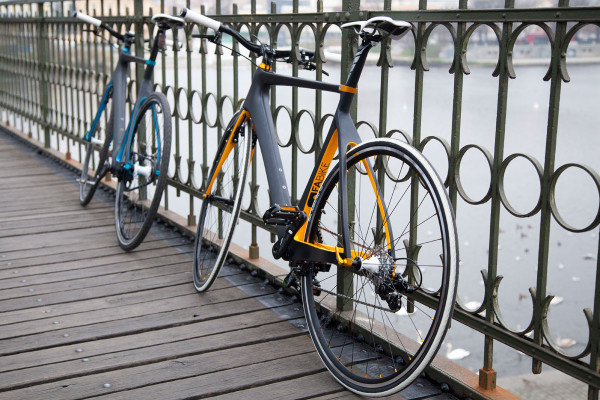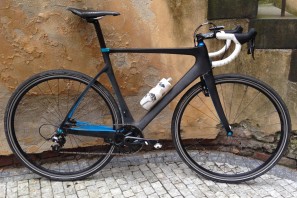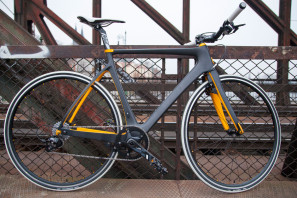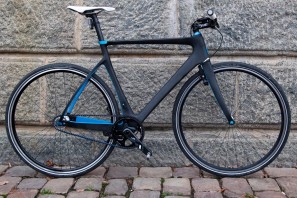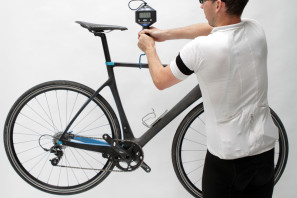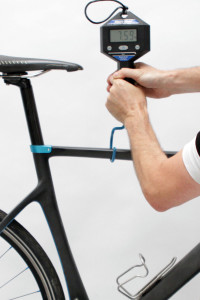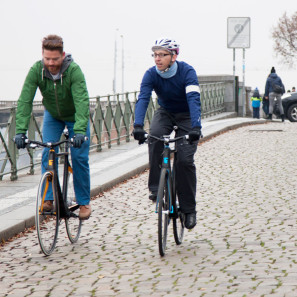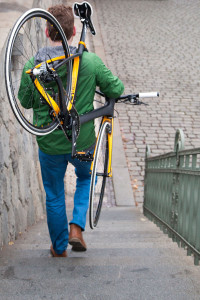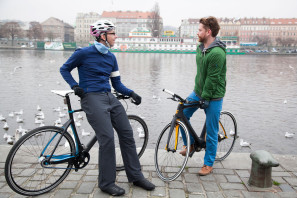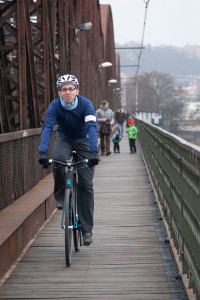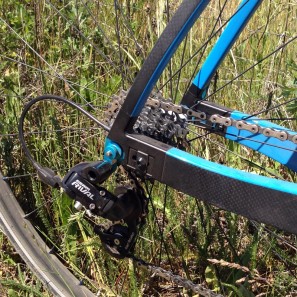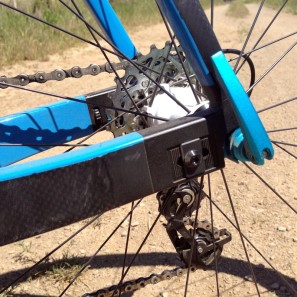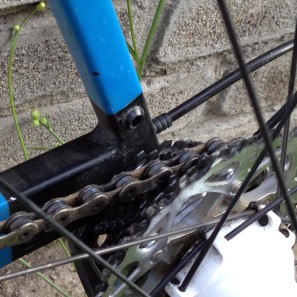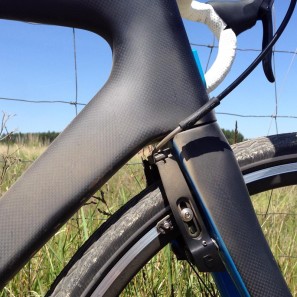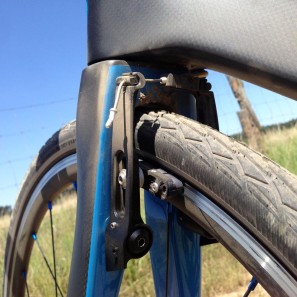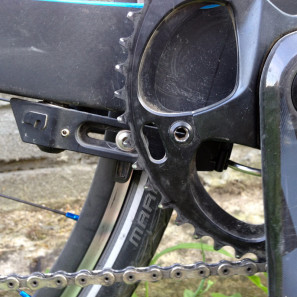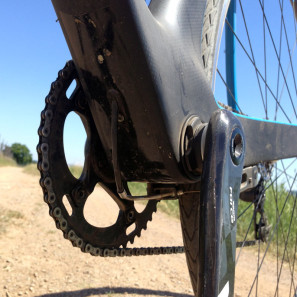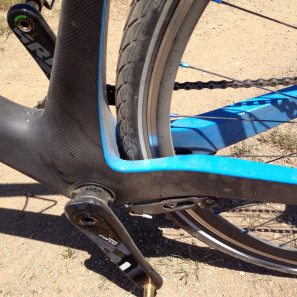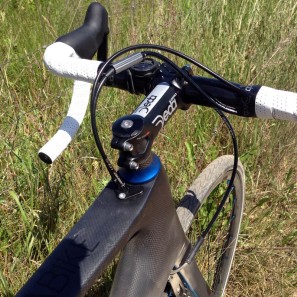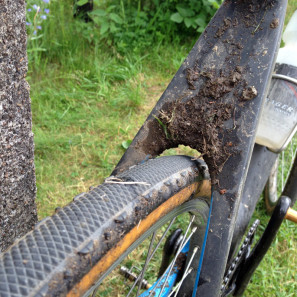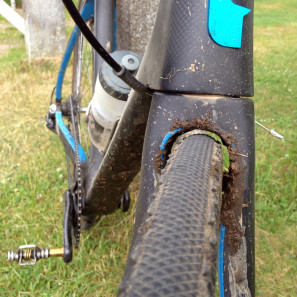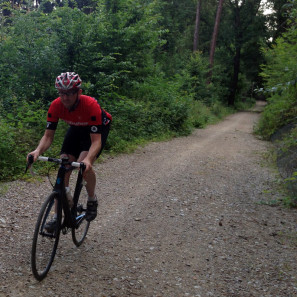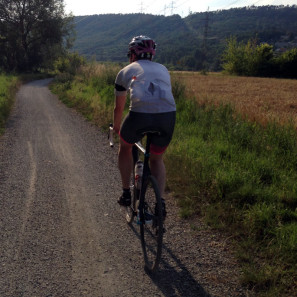It’s been more than half a year since we introduced you to our test of the multi-surface FABike road bike. During that time we had the chance to spend a few months with the bike, but also had a couple of separate occasions to meet up with the bike’s designer and sales director to do a bit of riding with the FABike team. This let us talk a bit more about what we though of the bike, to really get a good hands-on experience of the bike in several of its different setup iterations, and to discuss how the company is going forward with the bike. One topic that might interest our readers is the good discount on their current stock through the month of March.
Follow me across the break, and find more details and see our overall thoughts of the bike…
Details & Actual Weight
All the bikes we had been testing in the last half year were the 2014/15 model, what I would call version 1.3. FABike is a small company and as such hasn’t needed to give in to the typical yearly product cycle, but has been able to update the bike as they refine certain elements. The version we had is very much the same bike as was developed out of their Kickstarter project, but has seen some refinements to the drop-out and braking systems, both of which are pretty integral to the frameset.
The majority of our time was spent on a 1×10 SRAM Force/Rival mixed group with house-brand cockpit and wheels. We spent the majority of our time on the bike riding dirt and gravel roads, plus a sizable amount of singletrack, all stitched together with asphalt. We also mixed in a bit of city commuting, with lots of cobblestones and tram tracks. But we also had a chance to ride a Gates belt-drive singlespeed version with a narrow riser bar and a singlespeed-specific house-brand wheelset, and a 1×10 bike set up with a medium width riser. It is important to note that they all are the exact same frameset (including brakes), and all were primarily equipped with the same in-house wheel builds. We never rode one with a front derailleur, but when you buy the bike the bolt on mount is included, plus a modular cable stop for the internal routing to accommodate 1, 2, or 3 cables.
The drop bar bike that we spent the most time on weighed in at 7.59kg (16lb 12oz) in a size L without pedals (but with a 55g bottle cage) including the fat 35mm Schwalbe Marathon tires. The frameset sells for €2390/$2590 and includes: frame, fork, brakes, headset, seat clamp, and all the spare parts needed to create every possible configuration. FABike typically sells the bike as a frameset, because with their relatively small volumes and varied setups they really don’t get excellent OEM component pricing. That being said, since they aren’t tied in to a single spec they are happy to do custom builds for interested customers.
Our test bike paired a SRAM 10speed Rival rear derailleur, a SRAM Force crankset with FABikes’s own single front chainring, and SRAM non-series brake levers with a single rear shifter. Bar and stem were provided by Deda, while seatpost and saddle were house branded.
The Toray T800 carbon frames and forks are designed to be rather stiff, and combined with rather aggressive geometry (73.5° headtube/74.5° seattube for M and L frames) to give the bike the fast handling of a traditional road bike. Slightly longer wheelbases to accommodate extra tire clearance then give back some ride stability. The bikes are available in 5 sizes based on toptube length and also come in 5 color finishes.
About the discount, FABike has a promotion going on until the end of March to move out their carry-over 2014 stock. They are offering 30% off of framesets they have in stock, plus free international shipping. That drops the entry down to just €1673/$1813 delivered worldwide. Act fast and get in contact with them to find one in your size.
Ride Review
As we rode them, each iteration seemed very capable riding on cobbles, asphalt, gravel, and dirt. But with a very stiff overall feel to the frame and especially the fork, the bike was very dependent on the wheelset whenever we left smooth surfaces. We felt that the harsh-riding 27mm deep aluminum house-brand wheels and stiff tires were actually a major detriment to the ride of the bike as they were overly jarring. When we swapped in a traditional low-profile clincher with supple tires, and even more so when we tried a set of box-section tubulars and file-tread cross tires, the bike really turned into something fun and altogether different. It really wasn’t that the stock wheels and tires were so uncomfortable, but we just didn’t feel the smooth ride you would expect from a 35mm wide tire even at fairly low pressures. When we rode the bike with 23mm tires, we were more accepting of the rougher feel, but this bike is made for fat rubber.
The benefit of the bike design truly is fast handling combined with tire clearance for up to 35mm tires. It seems a shame to ever ride a small tire on it. The time we spent on the urban, flat-bar iteration with 23mm tires was a constant worry about picking the smoothest line across cobblestones and even paying attention to every gap in the asphalt. When we rode the bike with Panaracer Paselas or Challenge Grifo XSes, we were always looking for an adventure. The steep angles and the bike’s stiffness made it fast and always feel efficient, but wide supple tires made it fun.
The flexibility is a trait that we debated back and forth the merits of. Realistically most FABike owners aren’t likely to often swap between different bars or gearing setups. It is just too much of a hassle as it would be on any bike. That said, several of my personal bikes have stayed with me over the years specifically because they adapted as my riding changed. A geared mountain bike became a rigid singlespeed. A geared cross bike became a fixed commuter, then a singlespeed townie and occasional polo bike. These changes happen over time, so the FABike makes sense as an exercise in future-proofing your investment. In the short term the bike shines with more than one wheelset. We had a blast on the trail with a set of old used road tubular wheels that we glued some file treads onto; and it was nice to quickly swap in some soft 28mm clinchers to hit the road for longer rides, whether they were asphalt, gravel, or dirt.
The bike did have some issues that we would like to see addressed in future updates (and from our discussions with the FABike team, we’re pretty confident that some of them are already being addressed in upcoming versions.) Probably our only real pet peeve about the bike after spending a lot of time riding it on rough surfaces was how loud it was. Specifically, two issues bothered us: loud chain slap on the chainstay and a persistent rattling from the thumb adjustment dials on the sliding rear dropouts. Both are pretty simple fixes, by say including a full-wrap neoprene chainstay guard and probably just putting a good coating of threadlocker on the dropout adjusters. But without a solution, the big carbon tubes transmit noise really well and it took quite a while to diagnose the dropout hardware noise.
The sliding vertical dropouts worked well for us, never slipping or creaking. We always used them in their 130mm orientation, but they stayed put where we left them. Again worth noting, due to the very wide aluminum slider dropouts quick releases for mountain (135mm) spacing are required.
The selection of linear pull brakes and their location also brought about some annoyances for us in long-term use, although it was something we got used to. The nature of linear pull brakes and road levers results in very limited brake pad clearance/retraction. This meant that when swapping wheels, we had to readjust the brake cable for rims that varied more than 1or 2 mm. And we quickly learned of several out-of-true spots on an older rim that had spun freely on a canti-equipped bike. So we had to true the wheels, which was probably long overdue anyway.
While some might question the positioning of brakes as an aerodynamic decision, in the end it was more about delivering clean lines and the ability to use up to 35mm tires. Even most long reach road calipers won’t clear such big tires, and the mounts for these semi-hidden v-brakes disappear for those who build the bike fixed with 1 or no brakes. And linear pull brakes do provide very good stopping power. We were quite satisfied with the braking performance. Modulation was fine even off road, and power was great.
The location of the rear brake was in fact a bit problematic. Cable routing under the bottom bracket and the brake release behind the chainring made us struggle to adjust the brake or disconnect it to remove the rear wheel. This became annoying after a couple of wheel changes, and luckily the brake hardware is symmetrical, so we flipped the noodle so you could disconnect the brake from the non-driveside. While not totally eliminating the issue, it made wheel changes no worse than normal. Right after the flip, the bike made a weird noise that we quickly realized was the cable end brushing the back of the chainring. Again a simple thing to fix, but another complication of bottom bracket mounted brakes (unfortunately an issue on many bikes recently.)
What didn’t get solved was how to adjust or swap brake pads. We tested a set of carbon wheels on the bike and needed to exchange brake pads, but struggled to try to put different pads in the cartridge holders. Then when we had to adjust a crooked pad, we had to scratch our heads to figure out how to get to the bolt without taking off the chainring. A little trial-and-error worked for us, but was a bit of a pain.
As for braking issues, the word on the street is that FABike are looking to develop a disc brake bike in the next year, so all of these braking concerns will definitely go out the window, with the next major update.
The top tube port, internal routing meant cables needed pretty long loops for low friction and to accommodate an inline barrel adjuster. Aesthetically it wasn’t ideal and we chose not to mess with the internal routing, but it meant that I couldn’t put my GPS on the stem without cables blocking my view. An out-front mount later solved the issue, but the big cable loops did stand out.
Tire and mud clearance was pleasantly surprising. While FABike claims a 35mm tire should fit fine, the bike is very clearly not a cyclocross bike. We did however stick some 33mm file tread tubulars on the bike and hit the trails. Definitely not a bike for muddy trail exploring, it fared quite well in the occasional mud we found. Just a few mm all around we wouldn’t suggest any overly knobby tire, or anything bigger than a 33. But I got the feeling that any type of terrain or trail conditions that you could comfortably ride with Challenge’s Grifo XS file tread tire was perfectly suited for the FABike’s capabilities.
We spent a lot of time with the bike on dirt and gravel roads. Before cyclocross season took off here last fall, the FABike was really our go-to adventure road bike. Combing road geometry and carbon stiffness, it really was a greet option for covering long mixed-surface rides with a lot of asphalt. We do the majority of our road riding on cyclocross bikes, because almost every great ride ends up on gravel roads and very often on singletrack (and the central Europe roads can be pretty rough.) With a cross bike we deal with slower handling for the bulk of a ride, just to have the fat tires and mud clearance that we need for those shorter off-road sections. With the FABike, we get the fast handling we want for long less technical sections, plus the big tires and clearance for when it gets rough. The steep angles do require a bit more attention off-road when the trail gets tight, but with our technical off-road background it never was a problem. The bike does demand a bit of bike handling skill at slower speeds, in tight and twisty, or steep terrain. We would not really suggest it for someone new to riding off-road. But that clearly makes this a mountain biker’s road bike, capable to ride almost any surface, and able to adapt as your riding style does.
Our thanks to Eva Fišerová photography for the city riding photos.

